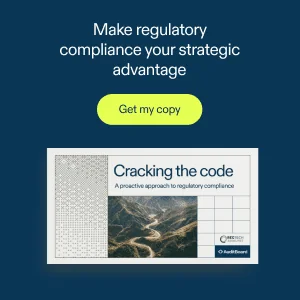Differential privacy represents a fundamental shift from traditional anonymization approaches, using mathematical principles to add strategic noise to datasets while maintaining their statistical value and providing formal privacy guarantees against all potential attacks. Towerwall CEO Michelle Drolet maps the security compliance landscape surrounding NIST’s new guidelines
Differential privacy is a mathematical approach to quantifying and managing privacy risks in data analysis. It limits the privacy loss that individuals may experience once their data becomes part of a dataset.
While standard de-identification methods eliminate apparent identifiers like names, addresses and ages, which are still susceptible to re-identification attacks, differential privacy is designed to be immune to all attacks on privacy, including those that use auxiliary data.
Differential privacy guarantees that the results of an analysis are practically the same whether or not an individual’s data is included, effectively hiding their contribution. This is done by adding random (“white”) noise to the dataset to mask specific personally identifiable information (PII) while preserving the database as a valuable statistical information source, maintaining privacy protection and data utility. However, noise, if applied incorrectly, can compromise privacy or make the data less useful.
In March, the National Institute of Standards and Technology (NIST) published “Guidelines for Evaluating Differential Privacy Guarantees,” which offers a thorough framework for comprehending and applying differential privacy that quantifies and manages privacy risks in data analysis.
How differential privacy stands out over traditional privacy techniques
Here are the key advantages of differential privacy over other privacy techniques:
- The mathematical promise of privacy: Differential privacy provides a formal and measurable mathematical definition of privacy. Differentially private computation for every query separately would result in varying responses to the same query. These varying approximate responses are still helpful for aggregate statistics, and this guarantees that a querier cannot disclose information unique to individual participants, thus keeping perfect data protected from attackers.
- Customizable privacy levels: The privacy parameters (epsilon and delta) can be tailored according to data sensitivity and the intended use case. Such variability allows organizations to appropriately tailor their privacy measures while maintaining accountability.
- Versatility of application to datasets: Differential privacy can be applied across different datasets regardless of their size or complexity. This versatility makes it flexible for use across industries and applications.
- Adaptability against future privacy attacks: As cyber threats evolve, differential privacy’s mathematical foundations help maintain its robustness against evolving threats. By adjusting the noise levels to suit the sensitivity of data and emerging risks, organizations can future-proof their data privacy and security against breakthroughs in computational techniques.
Your Sensitive Data Is Now a National Security Matter: The DOJ’s New Data Security Program
90-day implementation window closing on regulations affecting companies with genomic, biometric, health and other personal information
Read moreDetailsThe differential privacy security compliance implications
Organizations can be certain their data is being utilized securely, in private and ethically by incorporating differential privacy into their data practices. This would help them comply with key regulations like GDPR and HIPAA and gain public trust.
The following are the most important security compliance elements of this model:
1. Careful calibration and documentation of differential privacy parameters
NIST advises careful differential privacy parameter selection (such as epsilon and delta) depending on the data sensitivity and purpose. All parameters and their reasoning should be well-documented.
Organizations should conduct a thorough risk assessment to ascertain suitable parameter values to balance privacy and data utility. Parameters should be judiciously selected to avoid overly restricted data (potentially rendering it less useful for analysis) or open sensitive data to attacks due to weak security.
Detailed documentation of chosen parameters ensures the reproducibility of results so that organizations and researchers can replicate analysis with the same privacy standards.
2. Verification and validation of differential privacy implementation
Organizations must rigorously verify and validate the implementation of their differential privacy solutions to confidently align with the NIST guidelines and ensure the promised privacy guarantees.
Faulty implementations can unintentionally leak sensitive information, violating privacy regulations and damaging trust. Organizations must verify that their privacy parameters are configured correctly, noise injection methods maintain the required privacy-utility trade-off and that outputs of differential privacy algorithms meet privacy guarantees without exposing individual information. Wherever possible, implementation should be done using NIST-provided or reputable tools and libraries.
Organizations must deploy checks to ensure implementation conforms to ethical data-handling practices and adheres to global privacy legislation. Simulation of possible attacks through methods like re-identification assists in evaluating the system’s resilience. The utility of data output must be validated on real-world datasets to ensure that privacy-preserving measures do not excessively hinder data analysis capabilities.
3. Data sensitivity assessment and classification
NIST guidelines emphasize the need to properly evaluate and categorize data sensitivity prior to using differential privacy.
Through data sensitivity assessment and classification, organizations can determine the kind of data they process and the attendant privacy risks. Through proper determination of differential privacy parameters, organizations can implement necessary privacy controls while preserving utility, preventing likely breaches and noncompliance penalties.
4. Access control and data governance
Strong access control and data governance policies must be implemented to protect the original and the differentially private data.
If a data breach occurs, the exposure of the original data makes the differential privacy guarantee meaningless. This is why data must be safeguarded with strong security measures, both in transit and at rest.
Protect data at rest with encryption and robust system security. Restrict access to data, systems and differentially private outputs to authorized staff only with access controls. Apply the least-privilege principle to ensure specific users or systems only access the data they need for their tasks. Log access to de-identified data. These logs trace who accessed data, when and why, which is important for compliance audits.
5. Audit trails and logging
NIST highlights the importance of detailed documentation of differential parameters and their justification. Audit trails must record access and decision-making processes to verify and improve compliance.
Auditing and logs enable organizations to remain accountable, spot anomalies and confirm privacy assurances throughout data-handling procedures. Organizations should record every action, such as access to raw data, application of the differential mechanisms, and release of the outputs. A periodic review of the logs will ensure adherence to protocols and identify anomalies. Logs should be encrypted to avoid unauthorized access or tampering, and for their safe storage.
6. Ongoing monitoring and penetration testing
Security compliance is not a one-time process. To remain compliant with NIST guidelines, organizations must continuously monitor their differential privacy implementation and keep up to date with emerging threats and regulatory requirements.
Static security controls quickly become obsolete. Continuous monitoring ensures differential privacy mechanisms are correctly implemented and operate optimally over time. This helps to validate compliance and build trust with stakeholders.
Organizations must conduct periodic security audits and penetration tests to assess the efficacy of prevailing privacy parameters and address areas for improvement. Staying current with NIST guidelines will enable organizations to align differential privacy frameworks with changing privacy needs and developing technologies. Feedback from stakeholders and data analysts ensures the improvement of privacy mechanisms and utility issues.
Conclusion
NIST’s differential privacy framework comes at a time when data security and algorithmic fairness are redefining privacy laws in jurisdictions worldwide. Differential privacy is a major leap in data protection. It allows organizations to extract insights from sensitive information without compromising privacy and violating mandates. With the advancement of technology, differential privacy controls will be even more essential for a secure digital world.




 Michelle Drolet is CEO of Towerwall, a highly focused, specialized cybersecurity, cloud and virtual CISO services firm.
Michelle Drolet is CEO of Towerwall, a highly focused, specialized cybersecurity, cloud and virtual CISO services firm. 







